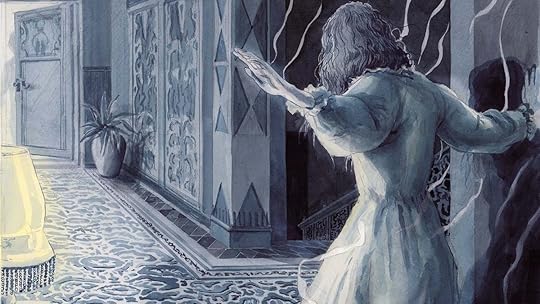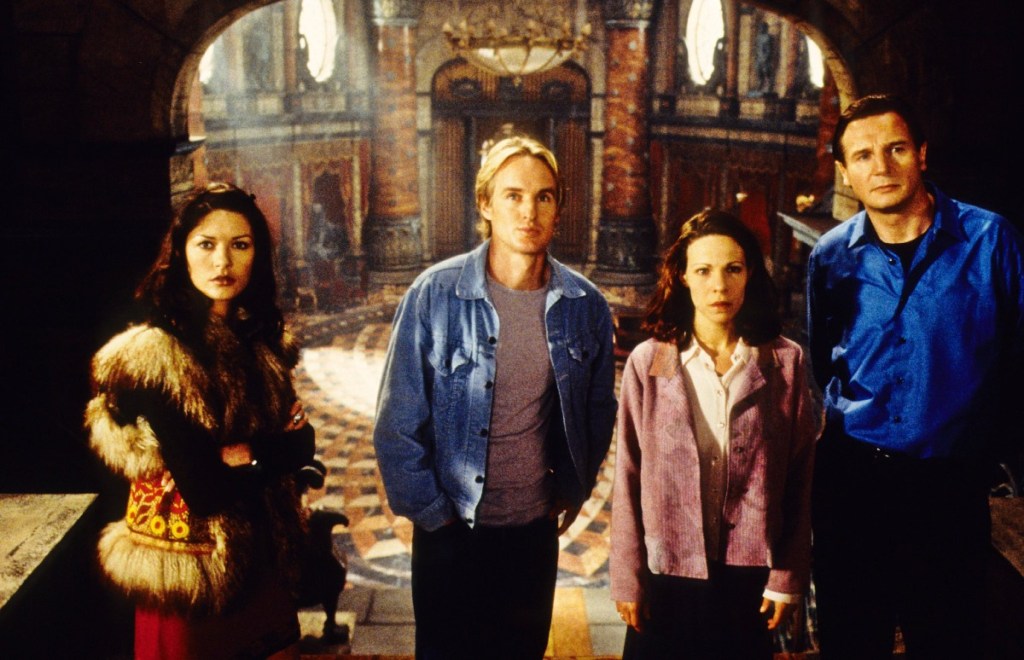Shirley Jackson‘s gothic horror classic The Haunting of Hill House has been significantly represented onscreen three times in the last 65 years since its publication. But the middle attempt sticks out for a variety of (not entirely great) reasons.
The original story was inspired by a group of psychic researchers Jackson had read about who studied a house and collected accounts of seemingly deluded and misguided individuals that read like ghost stories. This motivated Jackson to write her own haunted house story, which led to her researching a suitably haunted-looking house (which turned out to have been designed by her great-great-grandfather) and a healthy stack of existing ghost stories.
The result is one of the most celebrated ghost stories of the 20th century. The titular Hill House belonged everywhere and nowhere, which made it easy to take liberties with when adaptations came knocking.
Hill House revisited

In the original story, people are brought to Hill House because of their previous experiences with paranormal events. The small group stays in isolation at the mansion with hopes of discovering proof of the supernatural.
Of course, they experience some weird goings-on and vaguely described supernatural moments during their stay. As expected, it culminates in a haunting tragedy, but it’s a strong story because of its characters rather than its supernatural moments.
The Sound of Music and West Side Story director Robert Wise was the first to try with 1963’s The Haunting. Wise captured the novel’s spirit and structure better than later adaptations, staying reasonably faithful to the source material. He was rewarded with a well-received, atmospheric ghost story.
At the other end is Mike Flanagan’s 2018 Netflix series The Haunting of Hill House. Now, it is probably the most famous adaptation, but the story is pretty loose. Still, Flanagan knows that the personal hauntings of the characters are what matter most, and the show delivered that in spades.
That leaves 1999’s The Haunting. Jan de Bont‘s filmography didn’t exactly scream horror at that point. He’d directed both Speed movies and Twister by the time he entered Hill House. de Bont’s career had largely been centered on cinematography, which included Die Hard, Basic Instinct, Black Rain, and Lethal Weapon 3. Here is where you find his horror experience with Flatliners, Cujo, and Butcher, Baker, Nightmare Maker also among his credits.
The Haunting trailer
The Haunting takes the basic idea from the novel of strangers (played by Lili Taylor, Catherine Zeta-Jones, and Owen Wilson) being lured to Hil House. However, this time under the guise of a sleep study by Dr. David Marrow (Liam Neeson). But Marrow has a vested interest in the house’s dark history. Before long, the mansion begins to manifest its darkness in violent hauntings.
The positives here are that de Bont does capture some gothic feeling in his remake. The Hill House set is grandiose and creates a fantastic sense of space. Father Time has ensured the late-90s CG can spoil some of the great work here though.
There’s a clash of tones going on that derails the Haunting. It wants to be the hip, modern remake of a classic, and if you’re familiar with the late 90s and horror, then you’ll know exactly what that entailed. It wants to be scary and funny, but somehow fails to be either. That’s even stranger given it goes for a more aggressive tone than the source material. The potential for a moody atmosphere is soon sucked out of the film by a cast that has either poor writing or poor performances to blame for it (it’s both).
A Bad Haunting

The end result is a bit goofy, but largely stale and underwhelming. Not quite camp enough to be a cult classic, and not terrible enough to be an ironic watch along staple. It plays out less like a psychological horror about personal trauma and more like an expensive fairground attraction.
Not every adaptation of something must be kept in line with the source material’s tone. There’s fun to be had in taking that in a new direction. But that has to come from a place of sincerity and understanding. In de Bont’s The Haunting, it often comes across as the work of someone who has skimmed the book and the 1963 movie. Misunderstanding what the wider appeal is. The characters should be interesting and crucial to the horror on display. Instead, the 1999 film has all the emotional weight and sincerity of a YouTube reaction video.










